'Exile On Main Street' Is a Classic, But Not the Best Rolling Stones Album
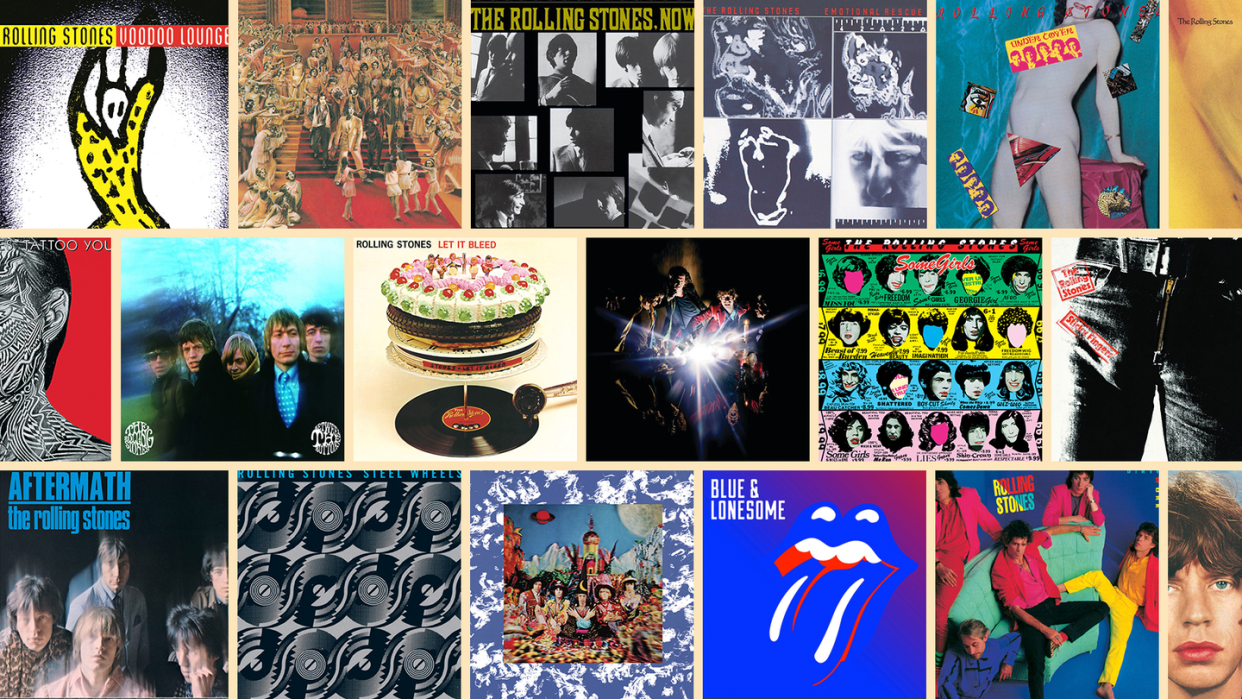
- Oops!Something went wrong.Please try again later.
- Oops!Something went wrong.Please try again later.
- Oops!Something went wrong.Please try again later.
- Oops!Something went wrong.Please try again later.
Like a lot of 20th-century bands still releasing music in the early part of the 21st, The Rolling Stones have a problem of inverse longevity: The longer they exist, the less essential their new output is.
That's because Mick Jagger, Keith Richards, Ronnie Wood, and Charlie Watts (who died in 2021), plus the others who passed through over the years, did their best work in the first two decades after debuting on American stages on June 5, 1964. (With one exception, anyway.) Grabbing inspiration from the political and cultural turmoil of the 1960s and early '70s, their dark, politically uncompromising music visited heartfelt longing, raw sexual hunger, a schoolboy love of R&B, and societal decay—often in the same tune.
But since the Stones have only occasionally been noted for their new work, including 2016's stripped-down Blue & Lonesome and, more recently, 2023's Hackney Diamonds, it seems only right to revisit their two-dozen studio releases, which have arrived with regularity over the last 55 years.
26. Bridges to Babylon (1997)
Bridges to Babylon dropped during a mostly fallow decade for the band in which the embalming of the Rolling Stones' legacy rammed against the flowering of indie-rock, backpacker hip-hop, electro, and other genres that made the Stones sound painfully irrelevant. Meeting that with a schizophrenic album that exhumed a few old tricks with sprinkles of the aforementioned genres was probably the worst decision the Stones could have made (even with the Dust Brothers on board). Other options: 1) No, and 2) Seriously, take a break!
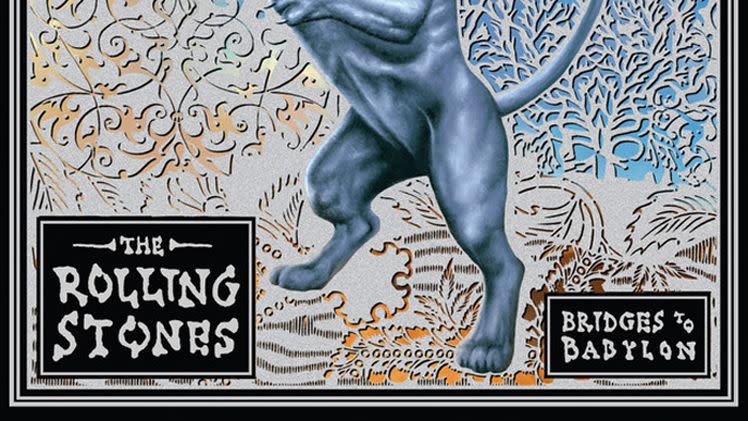
25. Dirty Work (1986)
Looking and sounding like trendy pop cash-ins more than the rock 'n' roll lifers they were, the Stones answered the question, "How can you phone something in while still frothing at the mouth?" It's not so much lifeless as it is headless and aimless, with every bad choice (from production to songwriting to performances) amplified by suffocating obliviousness. "One Hit to the Body" is a serviceable opening track, as is the cover of Bob & Earl's 1963 hit "Harlem Shuffle." Stay away from the rest.
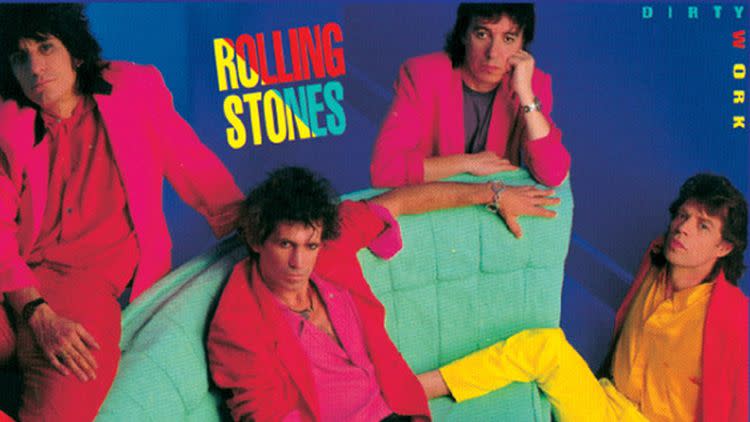
24. Undercover (1983)
I remember trying to the peel the stickers off this LP while scrounging through my dad's record crates in the 1980s. I wish that's all I remembered. Seeing it also reminds me of the album's (in hindsight, of course) ambitious but ungainly mash of reggae, rock, and pop, and its soulless, cynical themes that dig in or bash you over the head when they should be moving nimbly or cracking jokes in your ear. Embarrassing work from a band that is not easily embarrassed.
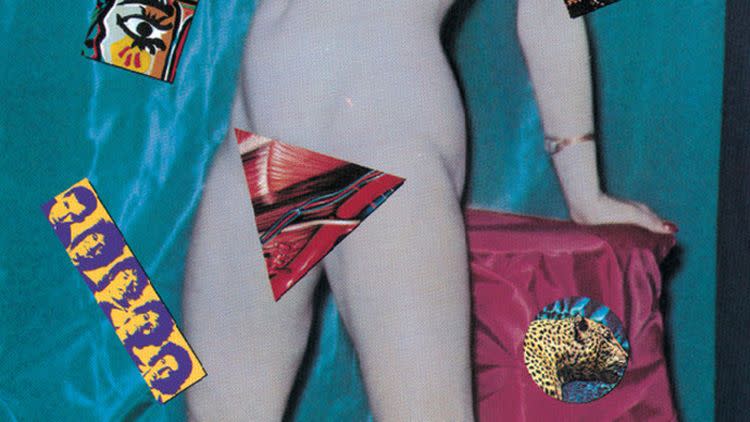
23. Voodoo Lounge (1994)
With producer Don Was (the aging white-dude's Rick Rubin) at the helm, the Stones tried to keep the momentum from 1989's quasi-comeback Steel Wheels going by stripping down and focusing on songcraft. The results are mixed, with a muddy sequence and bloated track selection that could have gotten there with three or four fewer detours — mostly in the limp, cliche-ridden middle. Still, there's something endearing about Jagger embracing the Stones' towering sleaze, even as he was hitting his mid-50s and fourth decade as a multimillionaire. Imagining a late '60s version of the otherwise sturdy "Sparks Will Fly" is also a bit like mind-editing The Phantom Menace to remove Jar Jar Binks.
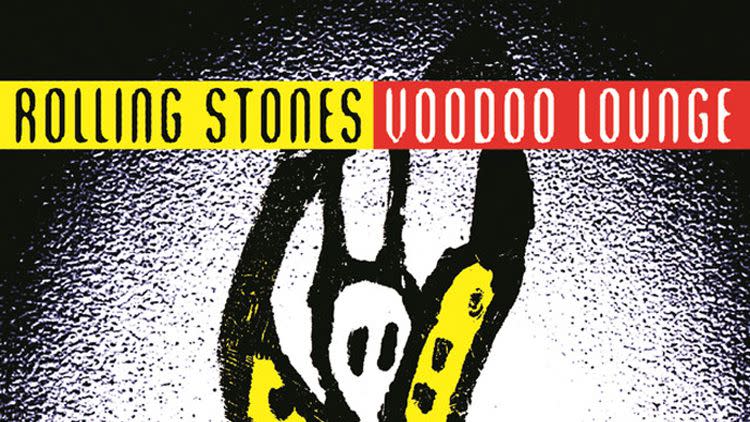
22. A Bigger Bang (2005)
GET IT? HAHA. What a clever title from a not-creepy-at-all group of aging misogynists. The trouble is, A Bigger Bang isn't frequently good enough to make dad-jokes about because it's a long and boring phone call you'll never want to take again. There are earnest moments of inspiration, but it's difficult to find them when simply trying to stay awake, or care, through songs like "Streets of Love." "Rough Justice," at least, sounds like the kind of unapologetic, white-boy-blues banger Black Keys could make if it stopped trying to sound committed.
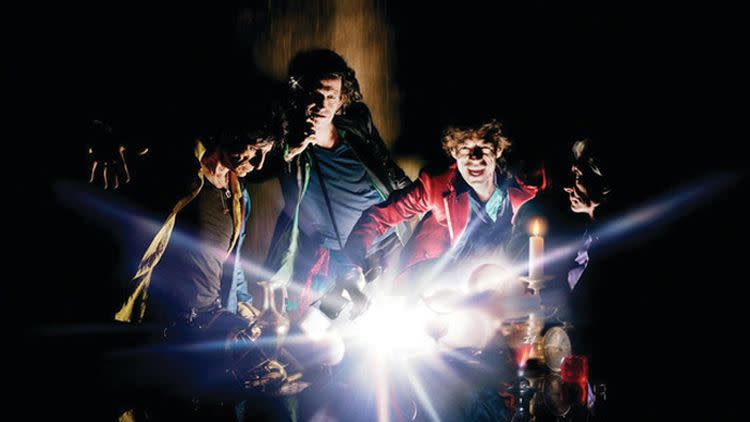
21. December's Children (And Everybody's) (1965)
The Stones' second proper American LP is a scattershot roundup of singles, live cuts, outtakes, and enduring hits such as "Get Off of My Cloud" and "As Tears Go By." The fact that it's at least half-covers relegates it to completist territory, but there are minor pleasures to be found in the Stones' crackling versions of Chuck Berry's "Talkin' About You" and Hank Snow's "I'm Moving On."
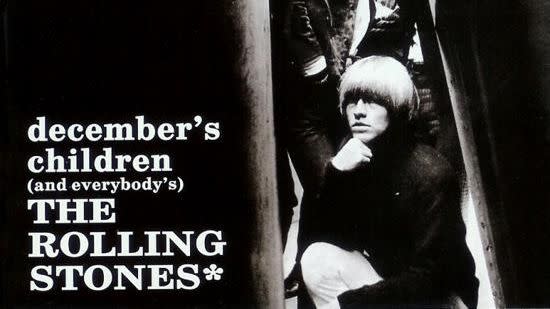
20. Black and Blue (1976)
Exhausted of interesting ideas, and in general, the Stones began taking tentative steps toward disco on Black and Blue, but the results were stymied by a transitional lineup and lack of focus. Reggae's here, of course, but overall Jagger and Richards seem more interested in fulfilling another contract requirement and staying famous. The upside: If you haven't listened to "Hand of Fate," "Memory Motel" or "Fool to Cry" in awhile, you'll find them comfier and more lived-in than your last visit.
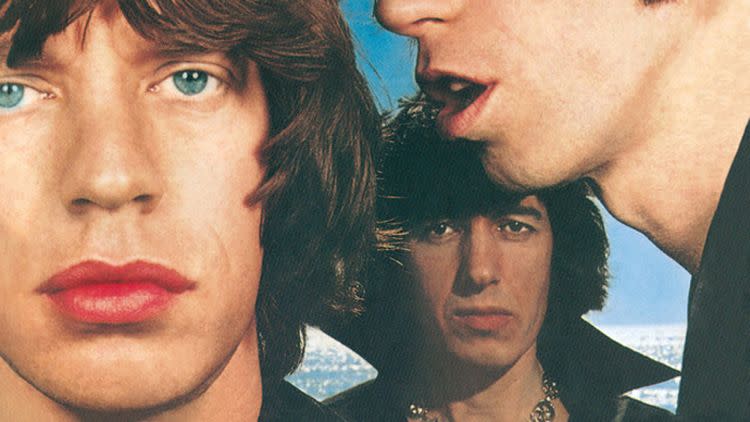
19. England's Newest Hitmakers (1964)
The Stones' debut always gets ranked on a curve, given the guileless, straightforward vibe and the fact that it kicks off with a cover (Buddy Holly's "Not Fade Away"). With only a single original ("Tell Me") it's more about introducing the band (and brand) than it is innovating, but Hitmakers at least gave the Stones a foothold in the States.
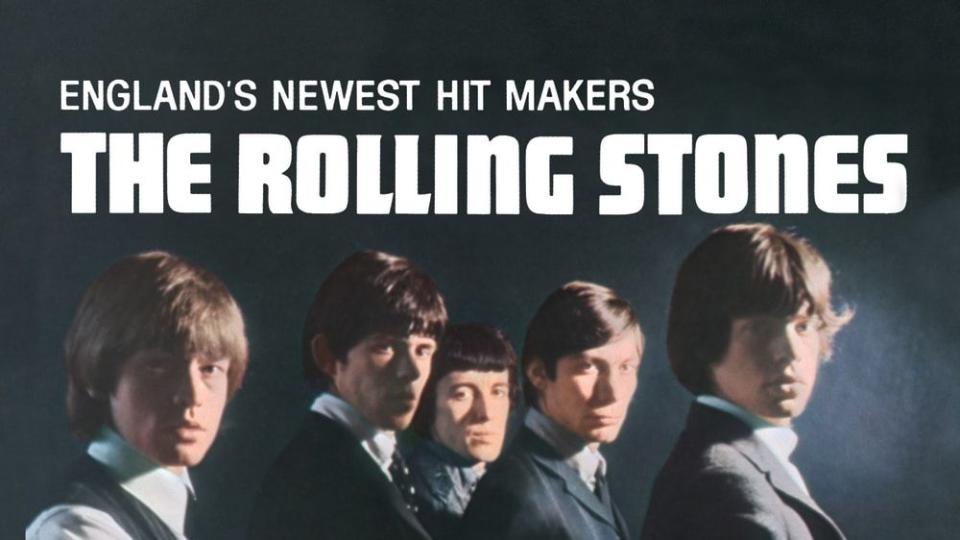
18. The Rolling Stones, Now! (1965)
As with most of their early work, there are songs here that appeared on other releases (including the luminous "Heart of Stone"), but overall, the Stones' third American LP remains a potent shot of classic, British Invasion R&B. While the Beatles were getting woke, the Stones were starting to write better songs and hint at themes of violence amid the heartbreak. It's like listening to a downed power line crackle in the branches, knowing it's going to set something ablaze soon.
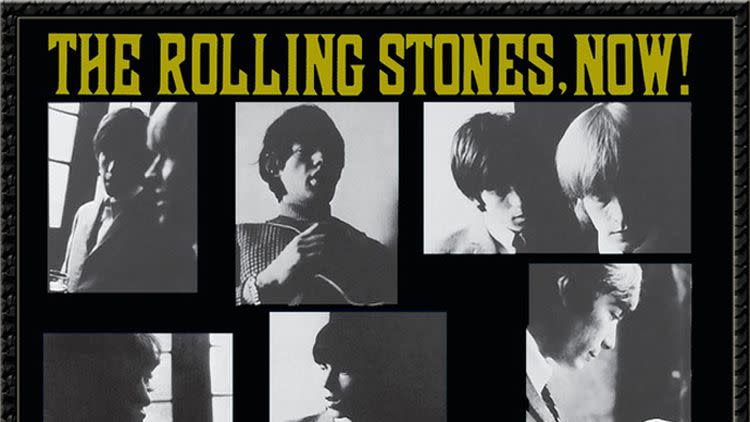
17. Steel Wheels (1989)
What's most endearing about Steel Wheels is that it sounds like an honest-to-God band of humans who have been playing together for decades. Touted as a (yet another, and not the last) reunion, Steel Wheels found the band energetic on the road and in the studio, relishing their elder-statesmen status while churning out respectable AOR like "Mixed Emotions," "Sad Sad Sad," and the template-heavy "Rock and a Hard Place" (all of them reaching back to Tattoo You for vocal tics and riffs). It's one of the few Stones albums that benefits from its mannered, tense production — Mick and Keith were slap-fighting beforehand — and it helped define what the band could do as the 20th century inched to a close.
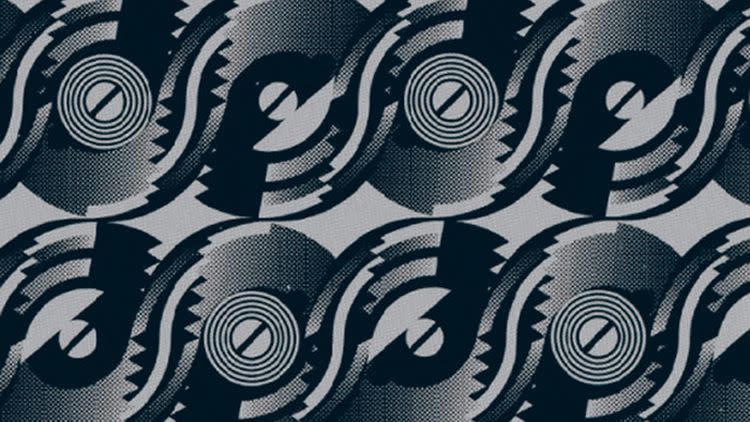
16. Goats Head Soup (1973)
Regardless of the enduringly shitty title and cover art (what is this, Captain Beefheart?) Goats Head Soup coasts thanks to better-than-average songwriting and a couple of bona fide classics — with "Angie" on top. What keeps this out of the Top 10 is a combination of unctuous, depressing sleaze and the fact that it immediately followed the greatest run of a studio albums in rock history. Whether or not the Stones were physically capable of a better product at the time (Keith was in the depths of heroin addiction), Soup was still an unsatisfying, lukewarm meal.

15. Their Satanic Majesties' Request (1967)
History may be written by the victors — and the Stones are certainly that — but this album gets an unfair rap for any number of sins, from its awkward psych-rock contortions to eye-rolling pretension, and the pervading sense it was a Sgt. Peppers rip-off. And honestly, the majority of the album falls short compared to the best songwriting in the Stones' catalog. But between the fearless and occasionally transcendent experimentation (including the band's wackiest-ever arrangements) and Summer of Love standouts "2000 Light Years from Home" and "She's a Rainbow," any self-respecting fan is just being bullheaded if they don't own this on vinyl.
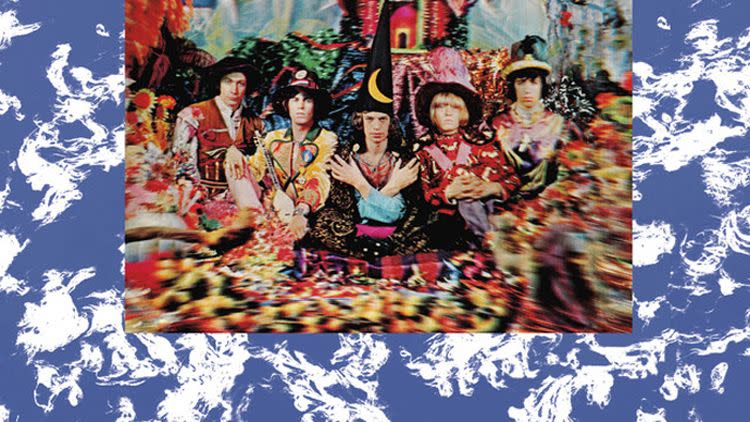
14. Hackney Diamonds (2023)
In fewer places is Jagger's undying love of writing and performing more evident than this sparkling, (presumably) late-career gem. Besides the finely textured but bombastic production and right-there performances, including guests Paul McCartney, Elton John, Stevie Wonder, and Lady Gaga (!), there's a sonic bounce that recalls the late '90s and early 2000s garage revival. Radio-ready songwriting is laced with taut melodies (see lead track/single "Angry") that would sound at home on any of the band's late-'80s and early '90s work. Resolutely 21st century, it's a shockingly strong, accessible album and —unless they can somehow top this—an ideal career closer that casts them all in a flattering light, muscles intact.
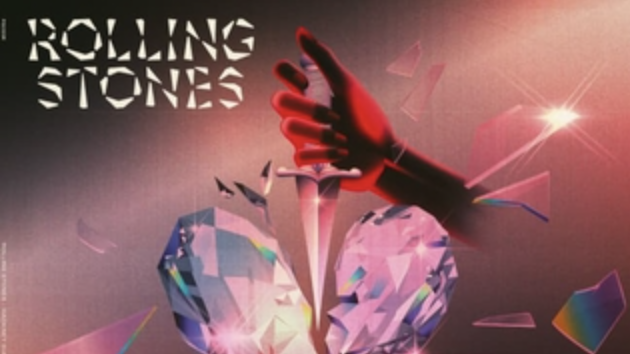
13. 12 x 5 (1964)
The first two years after the Stones' U.S. debut saw a swirl of activity and releases, but 12 x 5, their second proper stateside LP, features an undeniably high ratio of great covers and ever-more-rocking originals. Jerry Ragovoy's "Time Is On My Side," which the Stones popularized, still swings like a pendulum made of rough-hewn timber, while "Under the Boardwalk," "Susie Q," and "It's All Over Now" belong on any completist's road-trip playlist. Momentum = gathered.
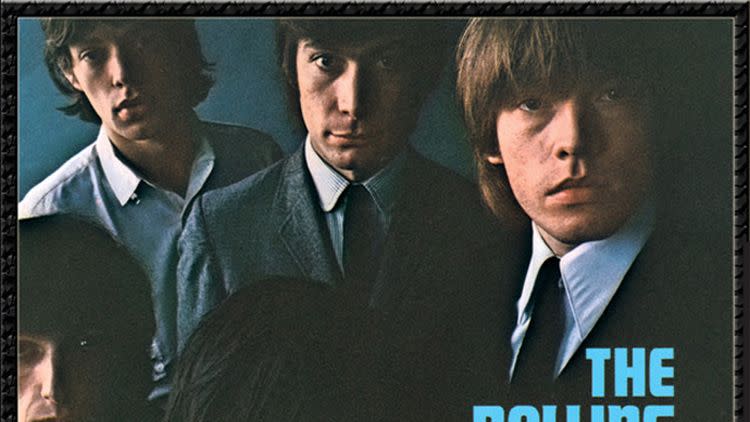
12. Out of Our Heads (1965)
"Time Is One My Side" was the Stones' first Top Ten hit, but the Jagger/Richards original "(I Can't Get No) Satisfaction" announced the band as a lusty, uninhibited force in popular culture. The sexual overtones only helped the set the Stones further apart from the shaggy British pack, while "The Last Time" and covers such as "Hitch Hike" (a Sam Cooke joint) and "I'm Alright" (Elias McDaniel) were starting to sound more like Stones classics rather than borrowed material.
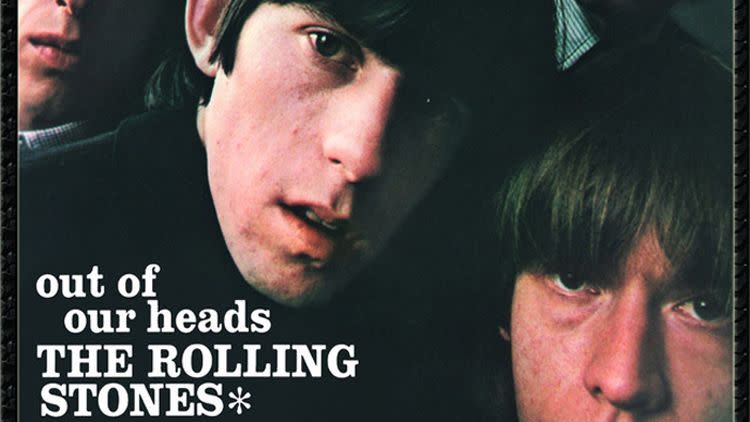
11. Blue and Lonesome (2016)
How could a new album rank so high on this list? Granted, sentimentality helps fill out the tracklist here, but the best Stones albums have always been about complementary talents locking into place. Age helps Jagger sound both more more comfortable or mournful on this collection of Chicago blues covers, recorded at Mark Knopfler's studio, and not even the high-profile guests (hey, it's Clapton actually playing guitar!) can outshine Jagger's clear, unguarded emotion.
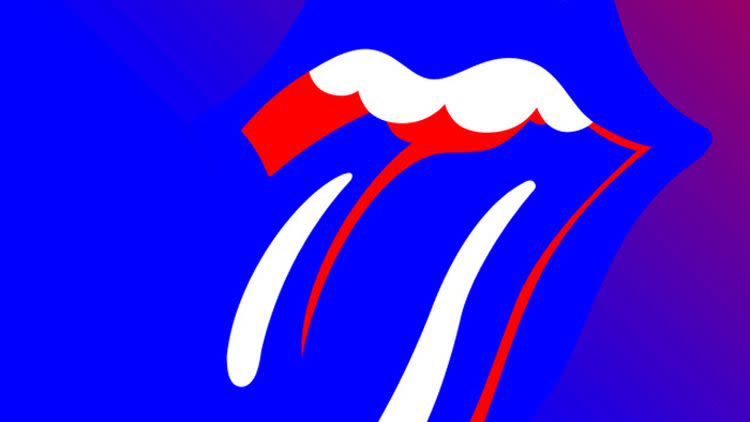
10. Emotional Rescue (1980)
Similarly, Rescue is one of the loosest, most casual albums in the Stones' catalog — much of it warmed-up from the Some Girls sessions. Considering how great that album is, we're not complaining. Upbeat drums on Pollyanna titles like "Summer Romance" conceal typically sinister lyrics such as, "You trying to hide your make-up and you're trying to flash your legs / Yeah, no sympathy from your spotty friends," even as the basic moves are cribbed from the Girls scorcher "Lies." (See also "Let Me Go.") Rollicking and collegial in a way that would soon be impossible for the band, it also features Jagger hitting a career-best falsetto on the title track.
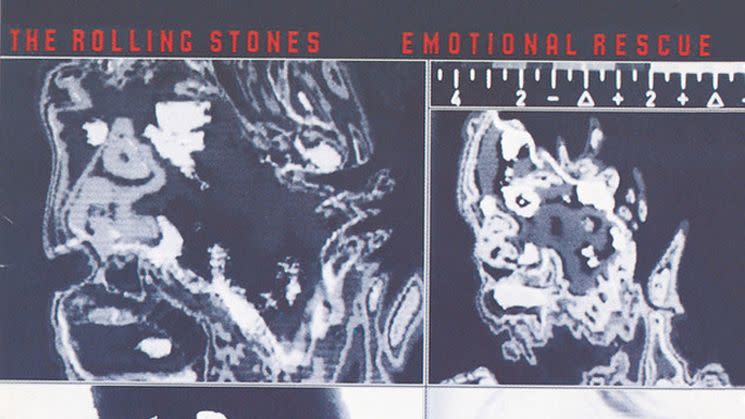
9. Tattoo You (1981)
The last great album in the band's timeline, Tattoo You wasn't drastically different in conception or production than Emotional Rescue, but the quality of songs instantly set it apart. "Start Me Up" and "Waiting on a Friend" are deservedly enshrined, but rarely has the group's latter-day rhythm section howled the way it did on "Slave," a stripped-down Black and Blue leftover that showcased the Stones' way with ecstatic boogie. The chicken-fried "Black Limousine" is also an under appreciated honkytonk classic that deserves to dominate jukeboxes below the Mason-Dixon line.
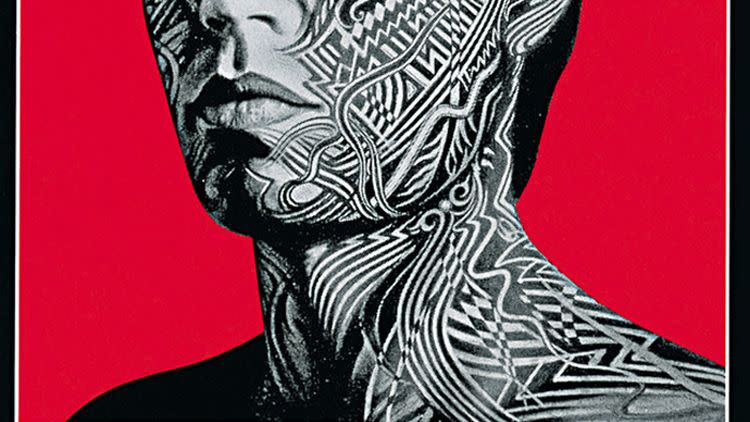
8. It's Only Rock 'n' Roll (1974)
While some acts were reviving, innovating or extruding rock's smacked-out promise (Bowie chief among them), the Stones were doing what they did best: pawing through the broken glass, blood, and wet cigarette butts on the floor, as the title track of this wobbly but occasionally thrilling album lays out. Following Exile with anything even remotely as good was impossible, but every golden-age expansion has a retraction, and at least It's Only Rock 'n' Roll dug in a bit before being swallowed by the yawning black hole that was the Stones' mid-'70s fate.
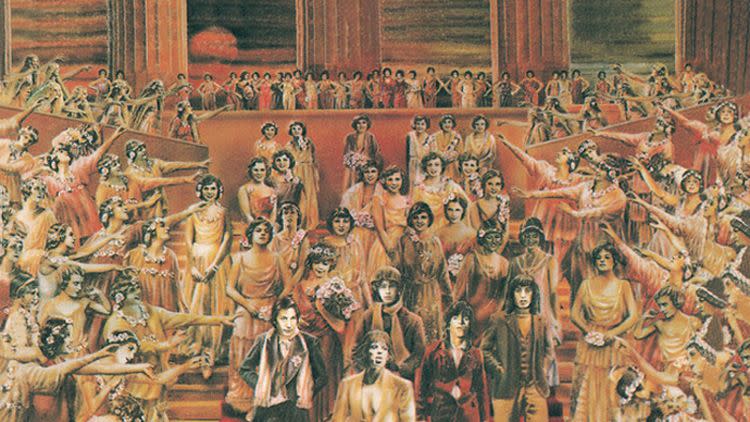
7. Between the Buttons (1967)
This isn't just the album that carried "Ruby Tuesday" and the racy (at the time, anyway) "Let's Spend the Night Together" to American audiences, it's a start-to-finish triumph that drips with equal parts campiness, high-harmony, and giddy tube-amp texture. "Yesterday's Papers" is a typical non-rocker that still scratches the garage-y itch, while "Connection" is one of the band's most concise and winning vocal figure-eights. "Something Happened to Me Yesterday" closes it out on a pronounced Kinks note, proving the Stones can (nearly) do their competitors better than their competitors can.
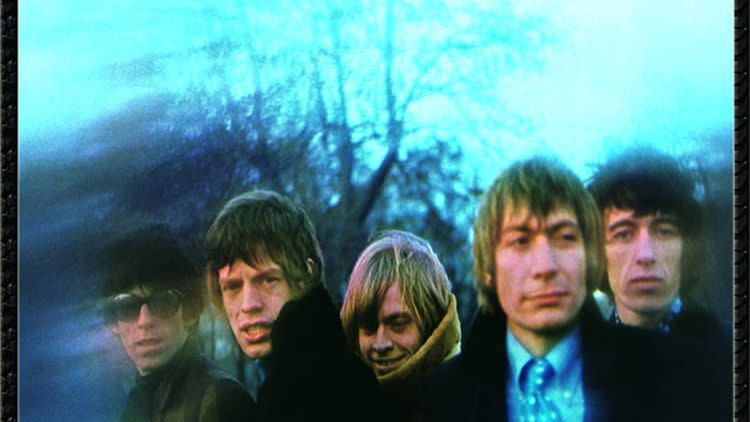
6. Aftermath (1966)
Another album that showcases the chops of a savvy, fast-evolving songwriting team, Aftermath finds Mick and Keith hitting oily gold with the bleakly melodic "Paint It Black" and "Under My Thumb," while the expansive (read: 11-minute) "Goin' Home" pinned blues credentials on their pasty white foreheads. It's great from start to finish (minus "Stupid Girl"), but the aforementioned lead tracks are so strong that they dominate the platter, then as now. It's also worth wondering how much further Brian Jones could have pushed pop music, George Harrison-style, had he lived out the decade.
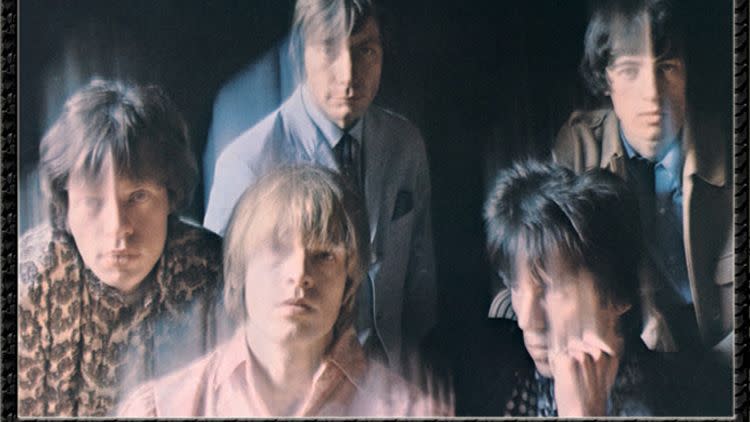
5. Some Girls (1978)
Some Girls works as both an album — its brilliant sequence flowing naturally from one track to the next — and as a collection of singles whittled down from copious experimentation and noodling. Going disco was probably always in the cards, but it's impossible to overstate the significance of seeing the world's biggest rock band do it, particularly amid the rise of punk and the dismantling of the hippie mythos. Funny, harsh, and always propulsive, nearly every song on here is a classic. "Beast of Burden," in particular, is a languid, deal-with-the-devil blend of sweetness and seediness the Stones have yet to top.
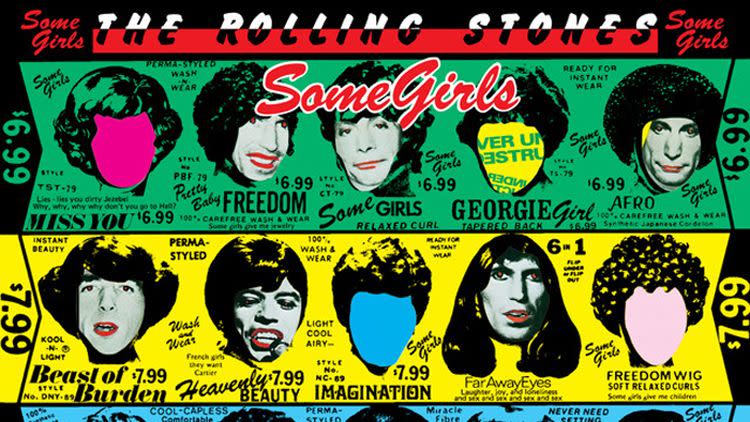
4. Beggars Banquet (1968)
Beggars Banquet wasn't the first great collection of all-original Stones material ("Prodigal Son" excepted), but it certainly sounds that way now, given how it kicked off the most faultless run in rock history (ending with 1972's Exile on Main Street). Sidestepping their reputation as pop's most horny and rebellious band, Beggars Banquet revealed an increasing world-weariness amid the subtle decay of the flower-child dream, which would hit the band squarely the following year during their concert at Altamont. Ambitious and diverse yet laser-focused, these 10 songs sway effortlessly between stomp, swagger, and acoustic laments. Bombastic and squirm-inducing at times (see the ankle-shattering "Stray Cat Blues") and wistfully modest at others ("Factory Girl"), it's all anchored by the stone-cold anthems "Sympathy for the Devil" and "Street Fighting Man."
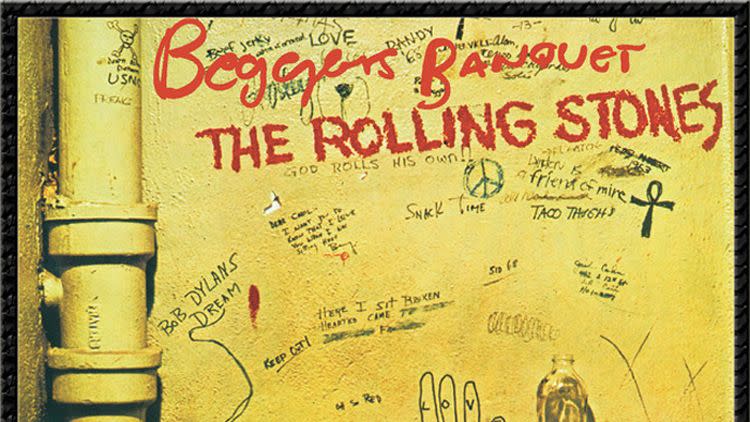
3. Let It Bleed (1969)
Has a title ever reflected an era or ethos better than Let It Bleed? While the western world was going up in flames, the Stones were cutting diamond-hard tracks with Brian Jones (who died before it was released) and new member Mick Taylor. The band's barely controlled mania helped channel the late '60s kaleidoscopic chaos, while the shadowy edges of the Stones' comfort zones beckoned them into pioneering new realms of psycho-sexual frenzy. It's a messy album, as the cover art implies, but if there's a more vital opening/closing lineup in rock 'n' roll than "Gimme Shelter" and (a mere 8 songs later) "You Can't Always Get What You Want," no one's heard it yet.
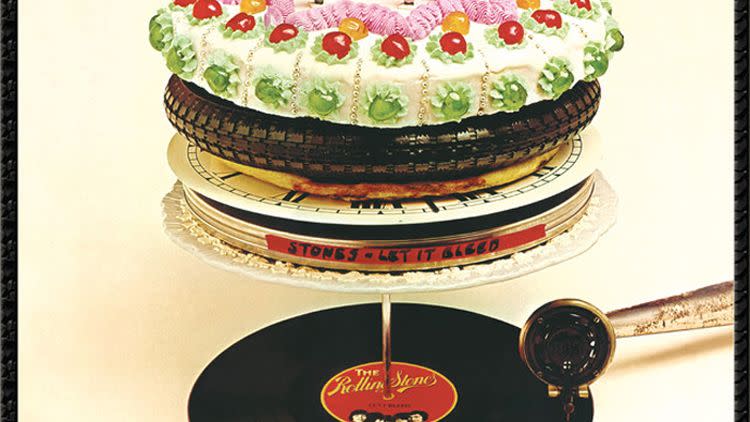
2. Exile on Main Street (1972)
This would be the Stones' finest hour (or so) if it didn't go on for so long, and to many, that's part of the appeal. Its 18 songs take time to sink in, rewarding close listens decades after first exposure. The Stones' equivalent of an epic novel, Exile's storied and tortured creation precedes it to such a degree that it's refreshing to go back and absorb the work on its own merits. "Sweet Virginia," "Shine a Light," "Tumbling Dice," "Rocks Off," "Loving Cup" and others sound both wise and relaxed as they sample country, soul, blues, and folk in their survey of American exploitation and tenderness. The fact that the Stones released this 10 years after forming is some kind of all-time record of artistic growth and development, even if the leisurely sequencing obscures the emotional roller coaster. Everyone still gets off in the end, it just takes awhile to get there.
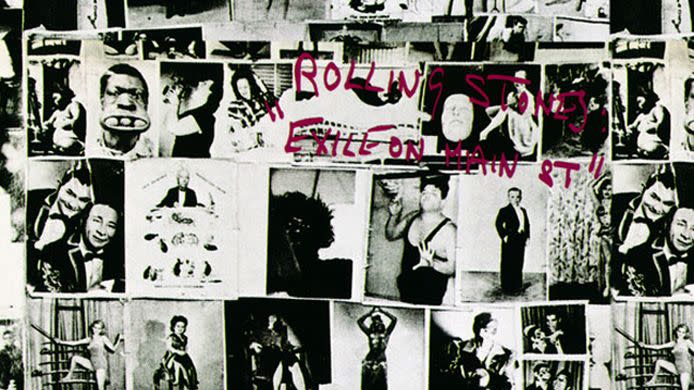
1. Sticky Fingers (1971)
Title aside, Sticky Fingers snaps like a thundercrack. No matter how many times you hear Charlie Watts' snare kick in on "Can't You Hear Me Knocking," or the way it stands firm against Keith's squirrelly riff, your limbs can't help but respond at a molecular level. Any band that can convincingly put excellent but tonally antithetical songs like "Bitch" and "Moonlight Mile" on the same platter is full of goddamned sorcerers. And the range of emotions displayed — from the jaunty satire of "Dead Flowers" to the mournful, gorgeous and immortally proud "Wild Horses" — makes the fact that this hangs together the more impressive. Sticky Fingers manages to rise above its time, subject matter, and circumstances of its creation by reveling fully in their messy and unsettling contradictions. Mick, Keith and the rest have spent their creative careers looking for grace in the gutter. This is its heavenly wail.
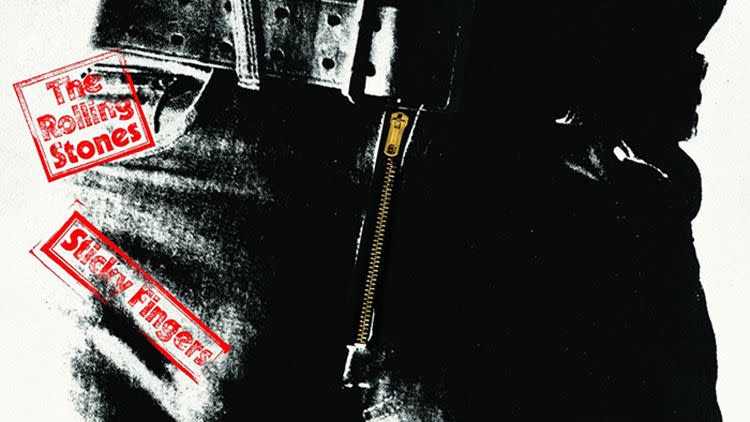
You Might Also Like

